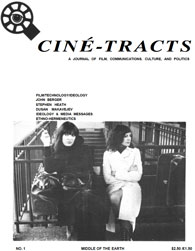Some comments on How Images Think
 Saturday, June 3, 2006 at 8:58AM
Saturday, June 3, 2006 at 8:58AM Professor Pramod Nayar of the Department of English, University of Hyderabad comments on "How Images Think." This is a small selection of a longer review that appeared in the Journal of the American Society for Information Science and Technology
How Images Think is an exercise both in philosophical meditation and critical theorizing about media, images, affects, and cognition. Burnett combines the insights of neuroscience with theories of cognition and the computer sciences. He argues that contemporary metaphors - biological or mechanical - about either cognition, images, or computer intelligence severely limit our understanding of the image. He suggests in his introduction that image refers to the complex set of interactions that constitute everyday life in image-worlds (p. xviii). For Burnett the fact that increasing amounts of intelligence are being programmed into technologies and devices that use images as their main form of interaction and communication - computers, for instance - suggests that images are interfaces, structuring interaction, people, and the environment they share.
New technologies are not simply extensions of human abilities and needs - they literally enlarge cultural and social preconceptions of the relationship between body and mind.
The flow of information today is part of a continuum, with exceptional events standing as punctuation marks. This flow connects a variety of sources, some of which are continuous - available 24 hours - or live and radically alters issues of memory and history. Television and the Internet, notes Burnett, are not simply a simulated world - they are the world, and the distinctions between natural and non-natural have disappeared. Increasingly, we immerse ourselves in the image, as if we are there. We rarely become conscious of the fact that we are watching images of events - for all perceptive, cognitive, and interpretive purposes, the image is the event for us.
The proximity and distance of viewer from/with the viewed has altered so significantly that the screen is us. However, this is not to suggest that we are simply passive consumers of images. As Burnett points out, painstakingly, issues of creativity are involved in the process of visualization - viewers generate what they see in the images. This involves the historical moment of viewing - such as viewing images of the WTC bombings - and the act of re-imagining. As Burnett puts it, the questions about what is pictured and what is real have to do with vantage points [of the viewer] and not necessarily what is in the image (p. 26).







